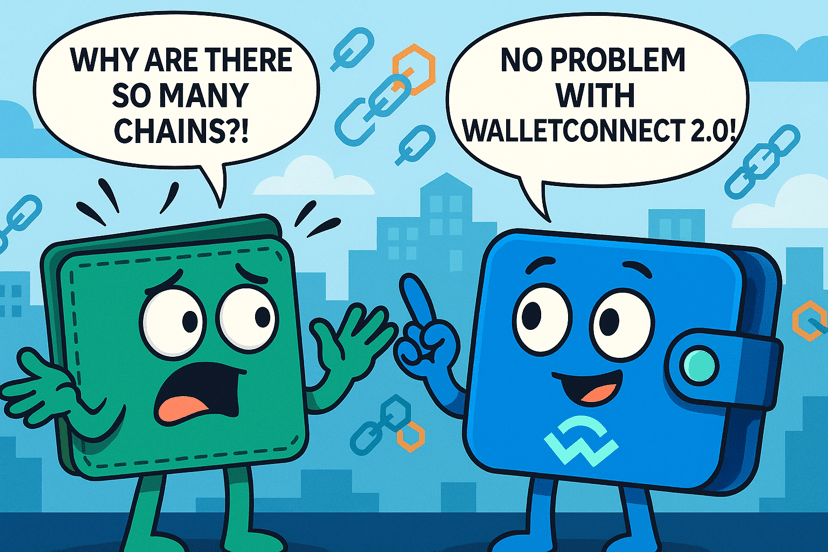In the realm of decentralized applications (dApps), WalletConnect has been a fundamental infrastructure for years. Its pop-up with QR code has enabled millions of connections between wallets and DeFi platforms, Web3 games, and NFT marketplaces.
However, version 1.0, launched in 2018, no longer met the needs of the current Web3 ecosystem. In an environment dominated by multiple blockchains, persistent sessions, and more complex authorization flows, a radical evolution was necessary.
This evolution came with #WalletConnect 2.0, a complete redesign of the protocol.
Technical architecture: What changes are being implemented?
Version 2.0 introduces a new architecture based on decentralized relayers, pub-sub topics with namespaces to separate compatible chains, and a robust capability for multichain sessions with granular authorization.
Key improvements:
* Persistent sessions: Users no longer need to reconnect when refreshing the dApp or switching networks.
* Real multichain connection: A single session allows simultaneous operations on Ethereum, Polygon, and Binance Smart Chain.
* Modular authorization: The dApp can request specific permissions (signing, transfer, etc.) for each network or contract involved.
Out-of-band messages: Real-time communication without the need for a direct connection, even without opening the decentralized application (dApp).
From the developer's perspective, these sessions are managed through @walletconnect/sign-client and now require more explicit management of pairing and authorization events with asynchronous listeners.
⚙️ Use case: Integration into a multichain DeFi dApp
Real example: Zerion and WalletConnect 2.0
#zerion a recognized multichain DeFi platform, integrates WalletConnect 2.0 to allow users to manage assets and sign transactions on Ethereum, Polygon, Arbitrum, and Optimism within a single persistent session. Thanks to the new protocol architecture, Zerion offers a seamless experience, with no reconnections or manual network changes, modular permissions, and increased security in multichain management.
* The user scans the QR code only once from their wallet.
* The application requests permissions in both namespaces (eip155:1 for Ethereum and eip155:42161 for Arbitrum).
* The session remains active even if the user closes the browser.
* Operations are automatically signed from the wallet without repeated pop-ups.
This type of flow is impossible with the previous version and is now becoming standard thanks to WalletConnect 2.0.
🔒 Security and control
One of the most notable advancements is the separation of namespaces by network, allowing the user to review and precisely control what they are authorizing, on which network, and for how long. Additionally, sessions can now be revoked or edited directly from the wallet without needing to delete the entire connection.
Likewise, WalletConnect 2.0 uses signed messages and ephemeral key-based authentication, mitigating common risks such as QR phishing or session reuse.
🌐 How does it compare to alternatives?

🔭 What’s next: Wallet-as-a-Service
The #Web3 ecosystem is migrating towards a smoother experience, and WalletConnect 2.0 will be the foundation for future abstract smart wallets (ERC-4337), where users will operate without needing to manually sign each action. There are already pilots where WalletConnect enables social payments, username wallets, and biometric authorization.

🎯 Conclusion
$WCT 2.0 is not just an update of the protocol; it is the infrastructure that connects the new generation of users with the possibilities of multichain.
In a decentralized future where #BitValue and other Web3 ecosystems thrive across multiple chains, tools like WalletConnect 2.0 will be key for frictionless interoperability, portable identity, and user sovereignty.
